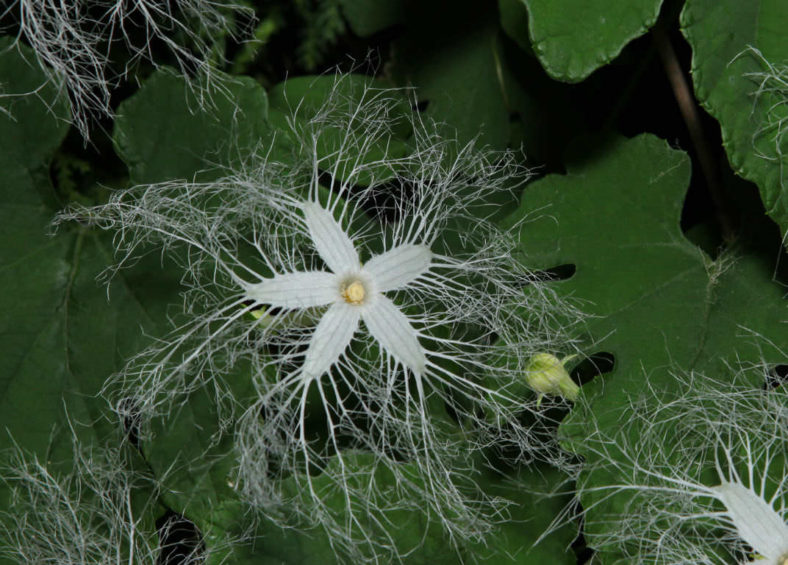Looking eerily akin to dangling green serpents, Snake Gourds are not an item you will see available in the supermarket. Related to Chinese bitter melons and a staple of many Asian cuisines, Snake Gourds are most likely found in an Asian market, or you may want to grow your own.
As its name not so cunningly suggests, a Snake Gourd is a gourd available in two varieties in the United States. Ornamental Snake Gourds are long, hard-shelled gourds grown as a curio in the garden. At the same time, its counterpart is an edible wax-skinned gourd (Trichosanthes cucumerina) that tastes much like a cucumber. Additional Snake Gourd info describes the interior of the striped, speckled fruit as being red, seeded, and slightly slimy.
This cucurbit hails from the Asian tropics and is borne from a rapidly growing annual vine with fruit reaching 6 feet (1.8 m) in length! You may also find it referred to as Snake Squash or Club Gourd, and it is often pickled with a texture akin to zucchini when young. It can be used just like zucchini, too — stuffed, baked, pickled, stir-fried, and is delicious in all curries and vegetarian dishes.
Extremely popular in Indian dishes, it's no surprise that Snake Gourd has found its way into ayurvedic medicine, often used as a cooling ingredient. Seeds of the Snake Gourd were sent to Europe from China in 1720. They have long been known to the American and European communities but were never cultivated since the plant needs warm nights to fruit. Today, there is renewed interest in its cultivation due to the rapidly increasing Indian communities in these areas of the globe.

Growing Conditions and General Care
Snake Gourds grow in tropical regions, so a similar climate is ideal for cultivating Snake Gourds. However, for those lucky enough to enjoy a warmer, drier environment, growing these gourds in the home garden is well worth the attempt. The rule of thumb is that if you can grow Lima Beans in your area, you can grow Snake Gourds.
First, Snake Gourds need a trellis or something they can grow up with — an arbor, chain link fence, etc. Make sure the structure is sturdy due to the weight of the large gourds. Next, start the seeds indoors early after soaking overnight to increase germination time. Transplant outside much as you would bean plants in well-mixed organic matter and topsoil.
Seeds can be saved for the following season but toss out any light-colored or white seeds. Keep and plant many more seeds than you think you may need, as the germination rate is only about 60 percent.
Snake Gourd care is similar to that of most other gourds. First, prune the plant's lateral branches to increase fruit set and production. Some people tie a pebble or other weight to the flower end of the gourd to foster a straighter fruit, but this is just for aesthetics. There is no need to do so.
Harvest Snake Gourds when young, around 40-50 days from planting. The long varietals may then be ready when only 16-18 inches, while the shorter cultivars will be about 6 to 8 inches (15 to 20 cm) in length.
The fully ripe fruit is quite inedible, orange, and mushy. However, the red, jelly-like substance surrounding the seeds can be eaten much as a tomato sauce in recipes or used in ayurvedic medicine. Seeds are often used as fodder for livestock but are toxic to humans.
Source: gardeningknowhow.com
Links
- Back to genus Trichosanthes
- Plantpedia: Browse flowering plants by Scientific Name, Common Name, Genus, Family, USDA Hardiness Zone, or Origin

